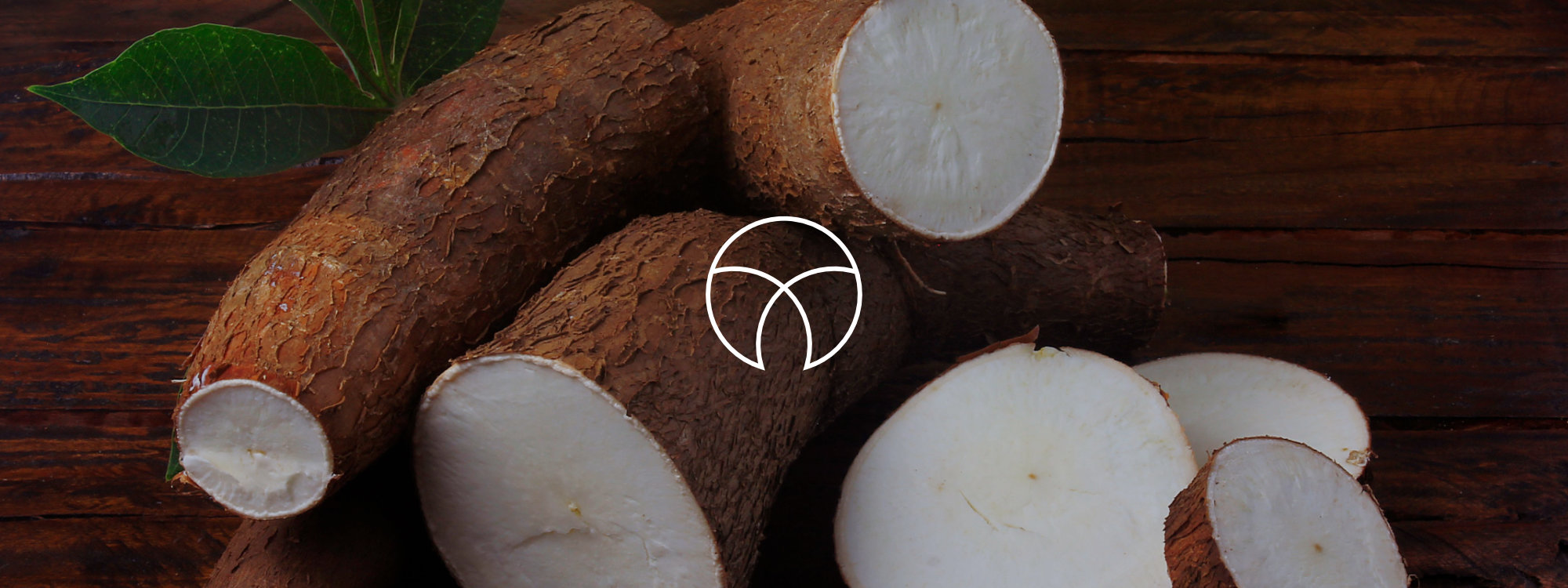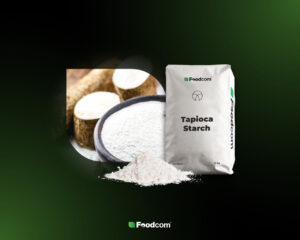- Modified Tapioca Starch is also called modified cassava starch, but there is a difference.
- Cassava is a plant and tapioca is made from cassava.
- Modified Tapioca Starch has texturizing properties that are used in various industries.
Modified Tapioca Starch is a starch widely used in the food industry, but also in many other areas. Its properties allow it to be a very useful texturizer. Modified Tapioca Starch is sometimes called Modified Cassava Starch. However, tapioca and cassava are not the same raw materials. What is the difference between them? If you want to find out, be sure to read on!
Tapioca vs cassava
Cassava, also known as manioc or yuca, is an exotic plant from the spurge family that is popular in Africa, Asia and the Americas. In Africa and South America, it is a staple food. It is poisonous in its raw state, but the poisonous properties are lost after soaking in water for a day or after heat treatment. The cassava root is long and cone-shaped and has a rough, brown skin. Its flesh may be chalky white or yellowish. Cassava roots are very rich in starch.
Tapioca, on the other hand, is a starch made from cassava. It is obtained by washing and peeling the roots, crushing them, leaching out the starch, separating the juice water, cleaning, draining and drying. Tapioca starch can be obtained either by wet milling or dry milling. However, wet milling is the better and most commonly chosen method – it is easier and less expensive, and the starch obtained is more consistent and of better quality. Tapioca starch, like other starches, consists of amylose and amylopectin. Most often it is found in the form of pearly balls, but it can also take the form of flakes and flour. The name ‘tapioca’ comes from the word tipi’óka, in the Tupi language, which translates as ‘sediment’ or ‘coagulant’. It refers to the curd-like starch precipitate that is obtained through an extraction process.
What is Modified Tapioca Starch?
Native tapioca starch has many beneficial properties that are used in various industries. Native starches are in general used as texturizers. If you want to know more about it, check out our article.
But sometimes native starch is not enough and it is more effective to use Modified Tapioca Starch. It can be modified in one of the following ways: physical, enzymatic or chemical. Modification of tapioca starch gives it some new desired properties. Starches are generally modified to be more stable against excessive heat and freezing, to change their texture or to make gelatinization process time longer or shorter. Currently, the most common technique for modifying starch to improve its functionality is chemical treatment.
Native tapioca starch is mainly used in the food industry, for example, in the production of Sweeteners, bakery and pastry products, pasta or soups. Modified Tapioca Starch, on the other hand, is not only used as an additive in processed foods, but also finds other industrial applications. If you want to know more about modified starch, its types and applications, you have come to the right place! Be sure to read our comprehensive article.
Modified Tapioca Starch is a food additive, but it appears under different E numbers. Modified starches from tapioca are for example:
- Modified starch E1404 (Oxidized Starch),
- Modified starch E1412 (Distarch Phosphate),
- Modified starch E1414 (Acetylated Distarch Phosphate),
- Modified starch E1420 (Acetylated Starch),
- Modified starch E1422 (Acetylated Distarch Adipate).
Modified Tapioca Starch properties
As mentioned above, Modified Tapioca Starch is available in the form of pearly balls, flakes and flour. It does not have a characteristic taste and smell, and therefore does not change the taste of food. In addition, compared to native starch, Modified Tapioca Starch is more soluble, more stable during freezing and thawing, shear resistant and less prone to retrogradation.
Modified Tapioca Starch is widely known as a functional additive. This means that it has texturizing properties. Because tapioca is neutral in taste and flavor, the only thing it changes is the consistency of the dish. Here is a list of all the things it can do to improve texture:
- thicken,
- bind,
- stabilize,
- gelate,
- emulsify.
In addition, Modified Tapioca Starch is naturally gluten-free, easily digestible and non-allergenic. It should also be noted that it is not genetically modified, so it should not be confused with GMO commodities. Thus, Modified Tapioca Starch is a safe food additive and its use in food products should not be of concern.
Modified Tapioca Starch uses
As mentioned above, Modified Tapioca Starch is mainly used in the food industry. It is said that it thickens food, makes the consistency more homogeneous and stable, or makes it gelatinize. But that’s not all – this starch is also used in the paper, chemical and pharmaceutical industries.
In the paper industry, Modified Tapioca Starch is used for its whiteness, cleanliness and viscosity. Its ability to bind water is also crucial in this field.
Modified Tapioca Starch is also used in the chemical industry as a component of adhesives. In the textile industry, on the other hand, it is used to strengthen and preserve thread. Modified Tapioca Starch ensures smooth textiles and is also used as an ink thickener – thanks to its properties, printed materials are crisp and durable.
Another use of Modified Tapioca Starch concerns the pharmaceutical industry. This product is used in the production of tablets – as a binder, filler and dissolving agent.
What is more, Modified Tapioca Starch is used as a water absorber in diapers and napkins. It is also found in medical gloves, as it facilitates the wearing of these gloves. In cosmetics, it is used in moisturizers that need to dry quickly. If you believe that Modified Tapioca Starch can also boost your business, do not hesitate to contact Foodcom S.A.!
Modified Tapioca Starch in food industry
In the production of foods, nutritional additives are added to give them various health benefits, but sometimes a certain texture must be achieved. This is where Modified Tapioca Starch finds its use.
Modified Tapioca Starch is most commonly used in sauces or syrups. It makes them thicker and more emulsified, giving them a smooth, creamy texture with a glossy appearance.
In beverages, Modified Tapioca Starch is a colloid stabilizer. What is more, it can be used as a sweetener, instead of Sucrose, because tapioca starch based sweeteners improve processing characteristics and product enhancing properties.
Modified Tapioca Starch is widely used in the confectionery industry. It is found in cream, fillings and baked goods. The final products are smoother, thicker and more viscous. Modified Tapioca Starch is also an ingredient in jellied confectionery such as jellies and gums. It is also the basis for gluten-free baked goods such as pancakes, tarts and cakes.
Modified Tapioca Starch can also be an ingredient in dietary supplements for athletes, as a source of carbohydrates.
In addition, the texturizing properties of Modified Tapioca Starch give a longer shelf life to a variety of products such as dairy desserts, cream fillings and canned or frozen foods.
Why Foodcom?
Our great team of Sales Support will help our Traders conduct the contract and business deals in a smooth and efficient way to ensure the best quality service to all our Business Partners. Our logistics team will take care of transportation and the financial department will be responsible for all matters connected with the financial part of the deal. Do not hesitate! Contact us.









